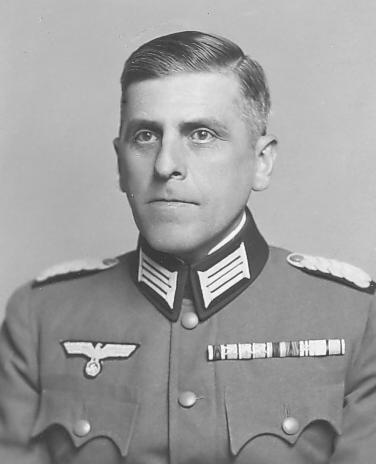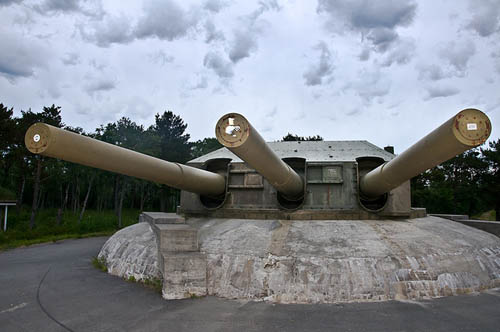Stiotta, von, Max Edler
- Date of birth:
- June 6th, 1887 (Trieste/Austrian Littoral, Austro-Hungarian Empire)
- Date of death:
- November 25th, 1977 (Vienna, Austria)
- Nationality:
- Austrian
Biography
Max Edler von Stiotta was born on June 6th 1887 in Triëste, the later Italian harbor which at that time was a city within the Austrian-Hungairan Empire. In 1907 he went as Zögling to the Technische Militär Akademie of the Austrian-Hungarian Army. Here he received the Kaiser Franz Josef Jubiläumskreuz in 1908. In 1910 he was placed with the Pionier Bataillon 15 in Pola. Between 1911 and 1914 he followed a training at the Höherer Geniekurs. In 1912 he was promoted to Oberleutnant and incorporated with the Sperbataillon Nr. 3. On April 1st 1914, von Stiotta was incorporated with the Geniestab within the Geniedirektion Riva. On August 1st 1914 followed a placement with the Brückenkopfkommando Krems and in November 1914 with the Brigade Bekessy in Bukovina. On March 12th 1915 he was wounded near Horodenka. Von Stiotta was then transferred to the 42. Honved-Infanterie-Truppen-Division on May 10th 1915 and promoted to Hauptmann on July 1st. On July 7th 1915 von Stiotta received the Bronzene Militärverdienstmedaille am Band des Militärverdienstkreuzes (FJ I und Karl I) and on July 8th 1915 his unit was placed with the 3.Geniestab der KuK Landsturmbrigade Bekesi. In september 1915 he was transferred to the 24. Infanterie-Truppen-Division. On October 14th 1915 he was awarded the Marianerkreuz. From May 13th 1916 von Stiotta was part of the Geniestab Fortifikationsbauleitung II Czernowitz, after he on the same day had received the Militär Verdienstkreuz III Klasse mit Kriegsdekoration. July 1916 followed a transferring to Brigade Russ for building of Defensive positions at Tatarenpass. On August 12th 1916 he changed this position for the Militärkommando Hermannstadt. In September 1916 von Stiotta becam liaison officer for the 8. bayrischen Reservedivision and in March 1917 Geniestabsoffizier with the Korps Liposcak. In november he changed this for the same position with the Kommando of the 1.Isonzoarmee and finally was transferred to the Heeresgruppen-Kommando Boroevic. At last he was placed in Reserves in January 1919.
During the First World War he further received the Eisernes Kreuz 2 Klasse, the Verwundetenmedaille (1 Verwundung), the Kaiser Karl Truppenkreuz and the Hongaarse Erinnerungsmedaille für Kriegsteilnehmer 1914 – 1918. On December 3rd 1918, Max von Stiotta became Ingenieur with the rank of Hauptmann. From April 5th 1919 he was part of the Geniestab.
In 1919 von Stiotta was made supervisor with a screw factory at Barthelmus. In 1920 followed the promotion to Major in Honor Service. In 1923 he transferred to a screw factory in Karlovac and became a member of the Technical Buro at Wien VI. From 1936 von Stiotta acted as teacher at the Officers School and becam Major with the Kriegstechnisches Stabes on October 1st 1937. In 1938 he was involved in the Wehrmacht again as an E-Officer and almost directly was placed as Major with staff of the Festungs-Pionierkaders VIII te Trier.
Here he was involved on the building of the Westwall.
In 1939 he was the Ia of the Festungs-Pionierkaders in the Heeresgruppe A. In 1940 followed his promotion to Oberstleutnant and from April 1940 he was placed with the Festungs-Pionierkader XIX, with which he took part on the invasion of France. October of the same year het became Kommandeur with the Pionier-Bataillon 295 in Kielce. On October 2nd 1941 he was placed with the Oberkommando des Heeres and changed to the Heeresgruppe Mitte in december as deputy to the General der Pioniere. On April 1st 1942 het was promoted to Oberst as Kommandeur with the Pionier Bataillon 385. With this unit he took part in the invasion of the Soviet Union and the battle for Stalingrad. On August 26th 1942 von Stiotta was placed with the Festungspionier Kommando XIX, with what he was promoted to Kommandeur on October 10th 1943. Here he took part in the building of the Atlantic Wall and fought during the Invasion in Normandy. After this he was transferred to the East and took part in the fightings against the Warsaw uprising. Finally in 1945 he reached the rank of Generalmajor as Armee-Pionier-Führer near Berlin and ended the war on the Oder.
Max von Stiotta was prisoner of war with the Soviets from 1945 until 1948. In 1948 and 1949 he stayed in Hillerse, Lowersaxony. In 1950 he worked as writer and technical adviser in Vienna. Between 1953 and 1956 he worked with the Firm Buchecker as Consulting Engineer. From 1956 until 1962 he was once again involved in the military as Concultant for the Bundesministerium für Landesverteidigung. On December 4th 1964 his wife died and in February 1968 he married with Edith Fexer.
Max von Stiotta died on November 25th 1977 in Vienna.
Do you have more information about this person? Inform us!
- Period:
- Second World War (1939-1945)
- Rank:
- Major
- Unit:
- Festungspionierkommandeur VIII
- Period:
- Second World War (1939-1945)
- Rank:
- Major
- Unit:
- Festungspionierkommandeur VIII
- Awarded on:
- June 20th, 1939
- Period:
- Second World War (1939-1945)
- Rank:
- Oberstleutnant (Lieutenant-colonel)
- Unit:
- Heersgruppe A
- Awarded on:
- May 28th, 1940
- Period:
- Second World War (1939-1945)
- Period:
- Second World War (1939-1945)
- Awarded on:
- October 2nd, 1941
- Period:
- Second World War (1939-1945)
- Rank:
- Oberstleutnant (Lieutenant-colonel)
- Unit:
- Heeresgruppe A
- Period:
- Second World War (1939-1945)
- Rank:
- Oberstleutnant (Lieutenant-colonel)
- Unit:
- Oberkommando des Heeres
- Awarded on:
- January 1942
- Period:
- Second World War (1939-1945)
- Rank:
- Oberst (Colonel)
- Unit:
- Kommandeur Pionier-Bataillon 385
- Awarded on:
- July 31st, 1942
- Period:
- Second World War (1939-1945)
- Rank:
- Oberst (Colonel)
- Unit:
- Kommandeur Pionier-Bataillon 385
- Awarded on:
- August 26th, 1942
- Period:
- Second World War (1939-1945)
- Rank:
- Oberst (Colonel)
- Unit:
- Festungs-Pionier-Kommandeur XIX, Heer
- Awarded on:
- October 10th, 1943
Sources
- Photo 1: Manfred Gross
- - PATZWALL, K. & SCHERZER, V., Das Deutsche Kreuz 1941-1945, Band II, Verlag Klaus D. Patzwall, Norderstedt, 2001.
- Documents via Manfred Gross
- Österreichisches Kriegsarchiv













